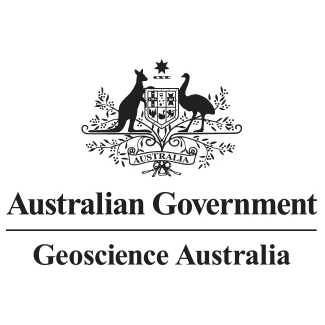Full description
This record was retired 29/03/2022 with approval from S.Oliver as it has been superseded by eCat 146261 DEA Geometric Median and Median Absolute Deviation (Landsat)This product provides ‘second order’ statistical techniques that follow from the geometric median, which is useful for environmental characterisation and change detection.
The Median Absolute Deviation (MAD) is a generalisation of the classic one-dimensional statistic for multidimensional applications, and is a measure of variance in a dataset through comparison to the median. It is similar in concept to the way that the standard deviation in statistics can be used to understand variance compared to the mean.
Lineage
Maintenance and Update Frequency: asNeeded
Statement: The three layers of the TMAD are calculated by computing the multidimensional distance between each observation in a time series of multispectral (or higher dimensionality such as hyperspectral) satellite imagery with the multidimensional median of the time series. The median used for this calculation is the geometric median corresponding to the time series.
The TMAD is calculated over annual time periods on Earth observations from a single sensorby default (such as the annual time series of Landsat 8 observations);however, it is applicable to multi-sensor time series of any length that computing resources can support.
For the purposes of the default Digital Earth Australia product, TMADs are computed per calendar year, per sensor (Landsat 5, Landsat 7 and Landsat 8) from terrain-illumination-corrected surface reflectance data (Analysis Ready Data), compared to the annualgeometric median of that data.
basic_htmlThe three layers of the TMAD are calculated by computing the multidimensional distance between each observation in a time series of multispectral (or higher dimensionality such as hyperspectral) satellite imagery with the multidimensional median of the time series. The median used for this calculation is the geometric median corresponding to the time series.
The TMAD is calculated over annual time periods on Earth observations from a single sensor by default (such as the annual time series of Landsat 8 observations); however, it is applicable to multi-sensor time series of any length that computing resources can support.
For the purposes of the default Digital Earth Australia product, TMADs are computed per calendar year, per sensor (Landsat 5, Landsat 7 and Landsat 8) from terrain-illumination-corrected surface reflectance data (Analysis Ready Data), compared to the annual geometric median of that data.
Issued: 30 11 2018
Modified: 12 08 2019
Modified: 23 04 2020
Data time period: 1986-08-16 to 2017-07-31
Spatial Coverage And Location
text: westlimit=-1943830.00; southlimit=-1119030.00; eastlimit=2170690.00; northlimit=-4856630.00
Subjects
User Contributed Tags
Login to tag this record with meaningful keywords to make it easier to discover
Other Information
DEA Geometric Median and Median Absolute Deviation (Landsat)
Identifiers
- Local : Link to be added by administrator
- Local : Product
- global : fd4c3b7c-b5c6-4c50-9b58-51db8e054fa1
- Local : pid.geoscience.gov.au/dataset/ga/120374
- global : bcf969df-6213-4e5c-86d4-64e3b53de64a
- global : 0f541ef2-0a18-4582-897b-e943019c9615
- URI : pid.geoscience.gov.au/dataset/ga/127494

- Local : www.ga.gov.au/metadata-gateway/metadata/record/83727/
- URI : rhe-ecat-prod01.prod.lan:8080/geonetwork/srv/eng/search?uuid=180ea3b0-773d-569b-e053-10a3070aa65f



